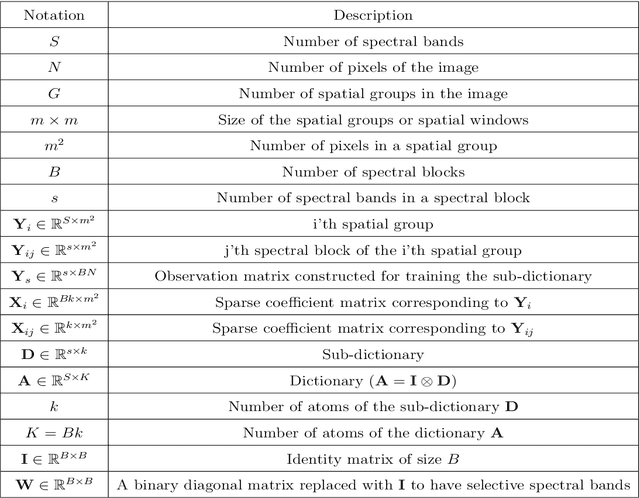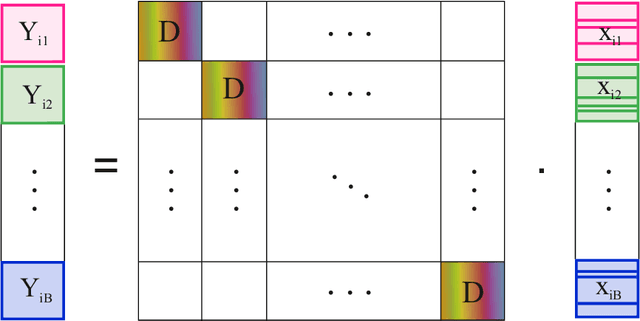Saeed Meshgini
Hyperspectral Image Classification Based on Sparse Modeling of Spectral Blocks
May 17, 2020



Abstract:Hyperspectral images provide abundant spatial and spectral information that is very valuable for material detection in diverse areas of practical science. The high-dimensions of data lead to many processing challenges that can be addressed via existent spatial and spectral redundancies. In this paper, a sparse modeling framework is proposed for hyperspectral image classification. Spectral blocks are introduced to be used along with spatial groups to jointly exploit spectral and spatial redundancies. To reduce the computational complexity of sparse modeling, spectral blocks are used to break the high-dimensional optimization problems into small-size sub-problems that are faster to solve. Furthermore, the proposed sparse structure enables to extract the most discriminative spectral blocks and further reduce the computational burden. Experiments on three benchmark datasets, i.e., Pavia University Image and Indian Pines Image verify that the proposed method leads to a robust sparse modeling of hyperspectral images and improves the classification accuracy compared to several state-of-the-art methods. Moreover, the experiments demonstrate that the proposed method requires less processing time.
Bone Age Estimation by Deep Learning in X-Ray Medical Images
Dec 15, 2019


Abstract:Patient skeletal age estimation using a skeletal bone age assessment method is a time consuming and very boring process. Today, in order to overcome these deficiencies, computerized techniques are used to replace hand-held techniques in the medical industry, to the extent that this results in the better evaluation. The purpose of this research is to minimize the problems of the division of existing systems with deep learning algorithms and the high accuracy of diagnosis. The evaluation of skeletal bone age is the most clinical application for the study of endocrinology, genetic disorders and growth in young people. This assessment is usually performed using the radiologic analysis of the left wrist using the GP(Greulich-Pyle) technique or the TW(Tanner-Whitehouse) technique. Both techniques have many disadvantages, including a lack of human deductions from observations as well as being time-consuming.
Diagnosis of liver disease using computer-assisted imaging techniques: A Review
Dec 15, 2019



Abstract:The evidence says that liver disease detection using CAD is one of the most efficient techniques but the presence of better organization of studies and the performance parameters to represent the result analysis of the proposed techniques are pointedly missing in most of the recent studies. Few benchmarked studies have been found in some of the papers as benchmarking makes a reader understand that under which circumstances their experimental results or outcomes are better and useful for the future implementation and adoption of the work. Liver diseases and image processing algorithms, especially in medicine, are the most important and important topics of the day. Unfortunately, the necessary data and data, as they are invoked in the articles, are low in this area and require the revision and implementation of policies in order to gather and do more research in this field. Detection with ultrasound is quite normal in liver diseases and depends on the physician's experience and skills. CAD systems are very important for doctors to understand medical images and improve the accuracy of diagnosing various diseases. In the following, we describe the techniques used in the various stages of a CAD system, namely: extracting features, selecting features, and classifying them. Although there are many techniques that are used to classify medical images, it is still a challenging issue for creating a universally accepted approach.
 Add to Chrome
Add to Chrome Add to Firefox
Add to Firefox Add to Edge
Add to Edge